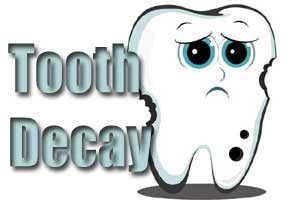- Home
- Editorial
- News
- Practice Guidelines
- Anesthesiology Guidelines
- Cancer Guidelines
- Cardiac Sciences Guidelines
- Critical Care Guidelines
- Dentistry Guidelines
- Dermatology Guidelines
- Diabetes and Endo Guidelines
- Diagnostics Guidelines
- ENT Guidelines
- Featured Practice Guidelines
- Gastroenterology Guidelines
- Geriatrics Guidelines
- Medicine Guidelines
- Nephrology Guidelines
- Neurosciences Guidelines
- Obs and Gynae Guidelines
- Ophthalmology Guidelines
- Orthopaedics Guidelines
- Paediatrics Guidelines
- Psychiatry Guidelines
- Pulmonology Guidelines
- Radiology Guidelines
- Surgery Guidelines
- Urology Guidelines
New antibacterial fillings may combat problem of recurring tooth decay, antibiotic resistance

A new study by Tel Aviv University researchers finds potent antibacterial capabilities in novel dental restoratives or filling materials. The new resin-based composites, with the addition of antibacterial nano-assemblies, can hinder bacterial growth and viability on dental restorations, the main cause of recurrent cavities, which can eventually lead to root canal treatment and tooth extractions. The study has been published in ACS Applied Materials & Interfaces.
This will obviate the need for oral antibiotics and will prevent the ever growing problem of antibiotic resistance.
"Antibiotic resistance is now one of the most pressing healthcare problems facing society, and the development of novel antimicrobial therapeutics and biomedical materials represents an urgent unmet need," says Dr. Adler-Abramovich. "When bacteria accumulate on the tooth surface, they ultimately dissolve the hard tissues of the teeth. Recurrent cavities -- also known as secondary tooth decay -- at the margins of dental restorations results from acid production by cavity-causing bacteria that reside in the restoration-tooth interface."
Tooth decay is among the costliest and most widespread bacterial diseases. Virulent bacteria cause the acidification of tooth enamel and dentin, which, in turn, causes secondary tooth decay.This disease is a major causative factor for dental restorative material failure and affects an estimated 100 million patients a year, at an estimated cost of over $30 billion.
Historically, amalgam fillings composed of metal alloys were used for dental restorations and had some antibacterial effect. But due to the alloys' bold color, the potential toxicity of mercury and the lack of adhesion to the tooth, new restorative materials based on composite resins became the preferable choice of treatment. Unfortunately, the lack of an antimicrobial property remained a major drawback to their use.
"We've developed an enhanced material that is not only aesthetically pleasing and mechanically rigid but is also intrinsically antibacterial due to the incorporation of antibacterial nano-assemblies," Schnaider says. "Resin composite fillings that display bacterial inhibitory activity have the potential to substantially hinder the development of this widespread oral disease."
The scientists are the first to discover the potent antibacterial activity of the self-assembling building block Fmoc-pentafluoro-L-phenylalanine, which comprises both functional and structural subparts. Once the researchers established the antibacterial capabilities of this building block, they developed methods for incorporating the nano-assemblies within dental composite restoratives. Finally, they evaluated the antibacterial capabilities of composite restoratives incorporated with nanostructures as well as their biocompatibility, mechanical strength and optical properties.
"This work is a good example of the ways in which biophysical nanoscale characteristics affect the development of an enhanced biomedical material on a much larger scale," Schnaider says.
"The minimal nature of the antibacterial building block, along with its high purity, low cost, ease of embedment within resin-based materials and biocompatibility, allows for the easy scale-up of this approach toward the development of clinically available enhanced antibacterial resin composite restoratives," Dr. Adler-Abramovich says.
The researchers are now evaluating the antibacterial capabilities of additional minimal self-assembling building blocks and developing methods for their incorporation into various biomedical materials, such as wound dressings and tissue scaffolds.

Disclaimer: This site is primarily intended for healthcare professionals. Any content/information on this website does not replace the advice of medical and/or health professionals and should not be construed as medical/diagnostic advice/endorsement or prescription. Use of this site is subject to our terms of use, privacy policy, advertisement policy. © 2020 Minerva Medical Treatment Pvt Ltd